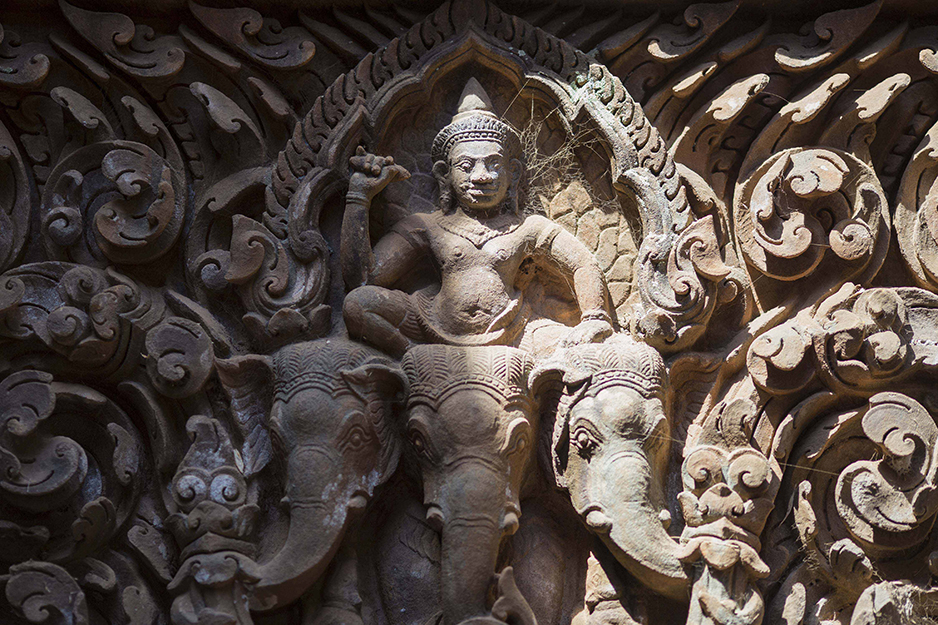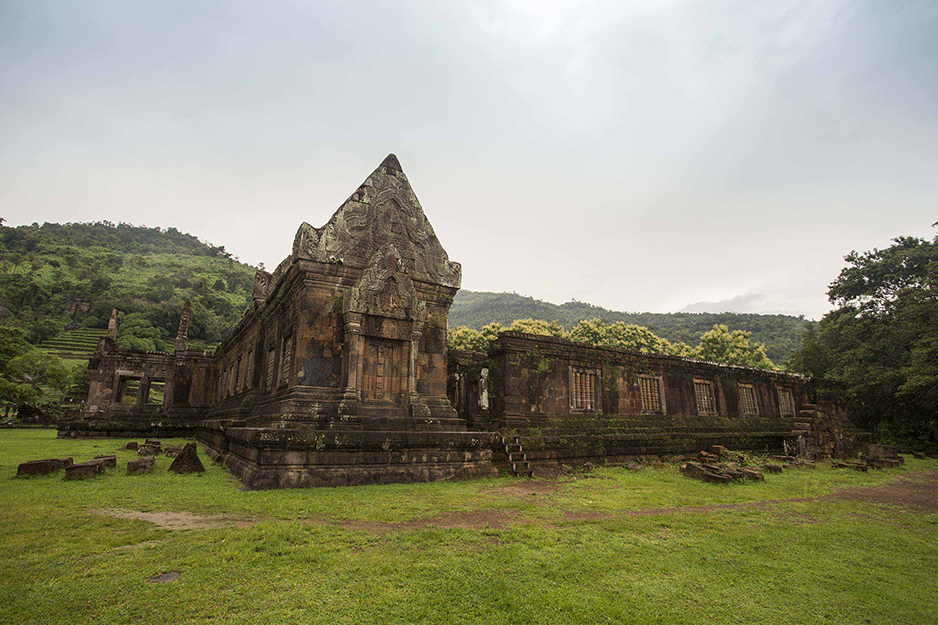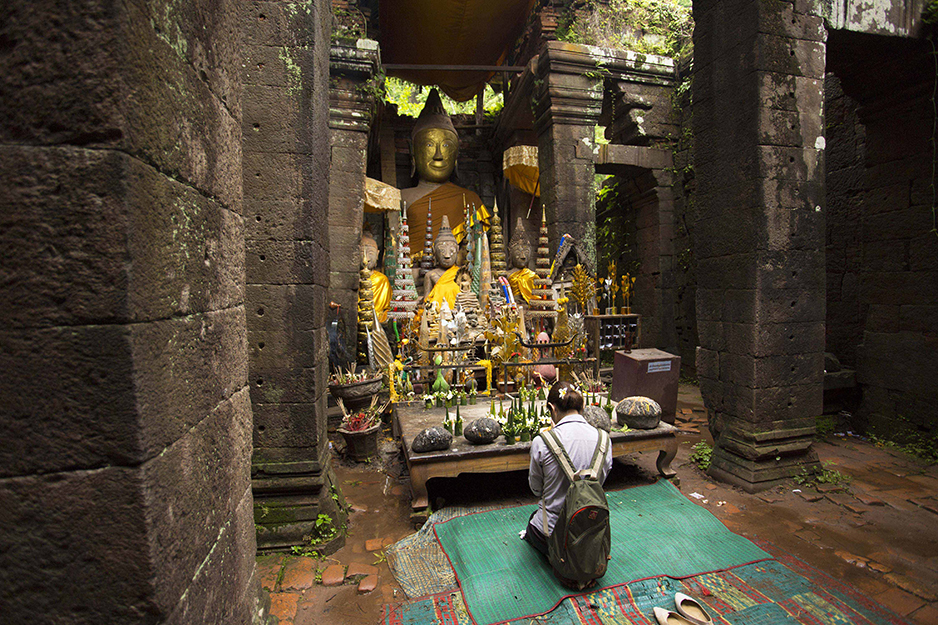Wat Phou reveals its true beauty and history for those who make time to visit.
Tiny Champasak, gateway to a small hillside temple complex of outsized spiritual importance, lies in one of the most enchanting spots in all of Laos. Travelers I met tell me they’re skipping a visit to Champasak to head straight from Pakse to the hammocks of the 4,000 islands in the lower Mekong River. I tell them they’re missing a trick. This pretty river-facing town of Buddhist temples, palms, low-slung homes, shophouses, the odd French-influenced royal palace, and a scattering of shops, cafés, and restaurants, is a relaxing spot to kick back in after visiting nearby UNESCO-protected Wat Phou.
Wat Phou sits in the shadow of a holy mountain shaped like a linga – Lingaparvata – symbolizing the Hindu god Shiva. Occupied from the 7th century, with its main Khmer structures built between the 11th and 13th centuries, it has been visited by Shiva, Buddhist, and animist pilgrims for centuries. It only came to western attention in the 1860s when Frenchmen of the Mekong Exploration Commission discovered its beauty. It must have been hugely exciting to come across such jungle-choked artistry in the wilds of Southeast Asia.

Because of terracing and layout, and jungle trees, grass, and flowers, modern-day pilgrims don’t get to glimpse the entire site at once. Each step is unwrapped, so to speak, as visitors climb higher towards the main sanctuary. The first encounter is two enormous basins of water before approaching two copper-toned sandstone ornamented pavilions whose use still baffles archaeologists. Beyond, visitors ascend a narrow, creased central staircase, graced by frangipani trees and blossoms, which feels like the pathway to some kind of spiritual enlightenment.
It’s what the Khmer kings had planned, David Bazin, a research assistant to site archaeologists, tells me.
“The Hindu religion, the site itself, and the spiritual power was used to influence and inspire people,” he explains.
The complex at Wat Phou represented their spiritual universe in stone. It also appears not to have been a mere vassal state to the larger Angkor Wat complex in Cambodia some 240 kilometers away. Recent research sheds new light on Wat Phou’s raison d’être. Bazin tells me that between the 9th and 13th centuries the kings of Angkor supported Wat Phou. Intensely detailed stele inscriptions, uncovered in recent year, reveal that weapons, rice, and money were sent in support of this distant site.
As we climb to the top of the weathered steps and stroll into the shade of a vast mango tree, Bazin explains: “This was possibly the first kingdom of the Khmer empire and a very spiritual place with the linga mountain.”
As we approach the main Hindu-turned-Buddhist sanctuary beyond the top of the staircase, its doorway graced with a beautiful carving of Indra on a three-headed elephant, I sense this. Inside the sanctuary are large Buddha statues, and behind them, a holy chamber. From the cliff face beyond this chamber trickles holy spring water which flowed through channels into the chamber and over a carved linga and out through the side of the building. The chamber is inaccessible now and propped up by scaffolding. Up here in the shadow of a vast mango tree, and with a glimpse of the milk chocolate lick of the Mekong visible in the distance, it feels like a secret, magical place.

After visiting the mostly unshaded ruins, cool off at the verdant River Resort where you can sink into its turquoise infinity pool and watch life pootle by on Mekong currents.
Later, head out by tuk-tuk, or bicycle, on a 10-minute ride to Champasak Spa for a soothing massage. Book a ticket to catch a shadow puppet theatre performance accompanied by a live music ensemble. Grab a sundowner at a café and watch river life go by bankside, or town life roadside, where men sell baguettes hanging in bags on their bicycles, and tweeting birds flit from louvered shutters to frangipani. Dine in Nakhorn Café’s pretty garden, and relax with a Beerlao. The overrun river islands in the south can wait.
MORE INFO
Look out for new book ‘Vat Phu, The Mountain of Shiva, Convergence between Science and Religion’ by Italian archaeologist Roberto Marzano.
Wat Phou Festival next takes place from 6–8 Feb. 2020.
GETTING THERE
Lao Airlines flies to Pakse regularly from Luang Prabang, Vientiane, Bangkok, and Siem Reap.
Text BY Claire Boobbyer
PHOTOGRAPHS BY Phoonsab Thevongsa


 ລາວ
ລາວ
